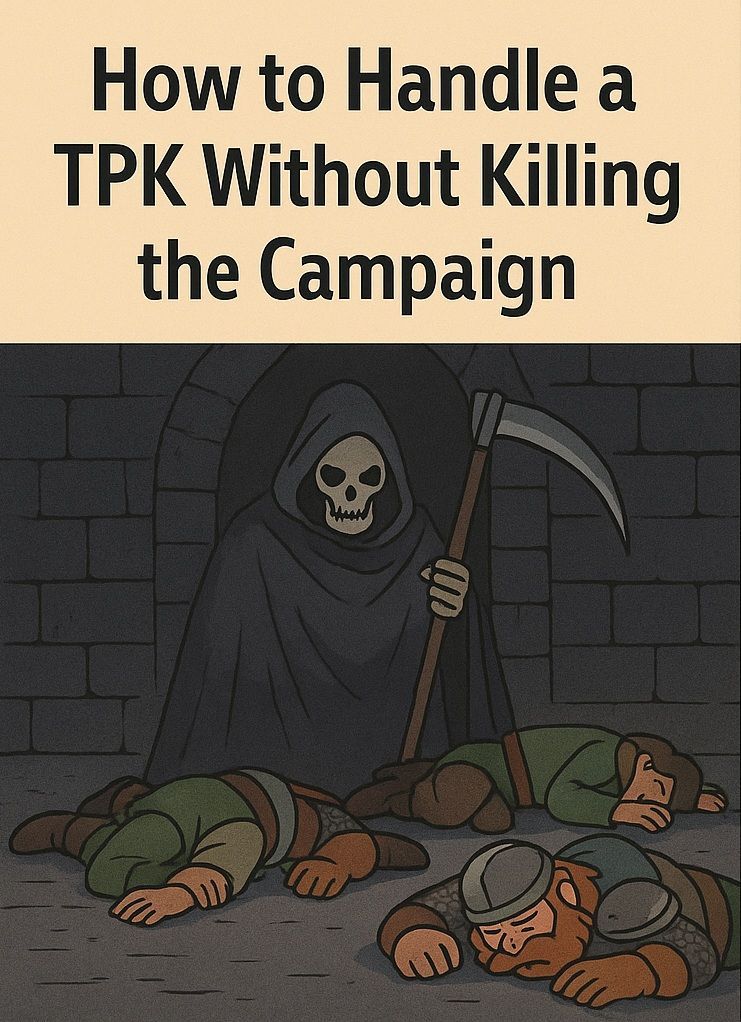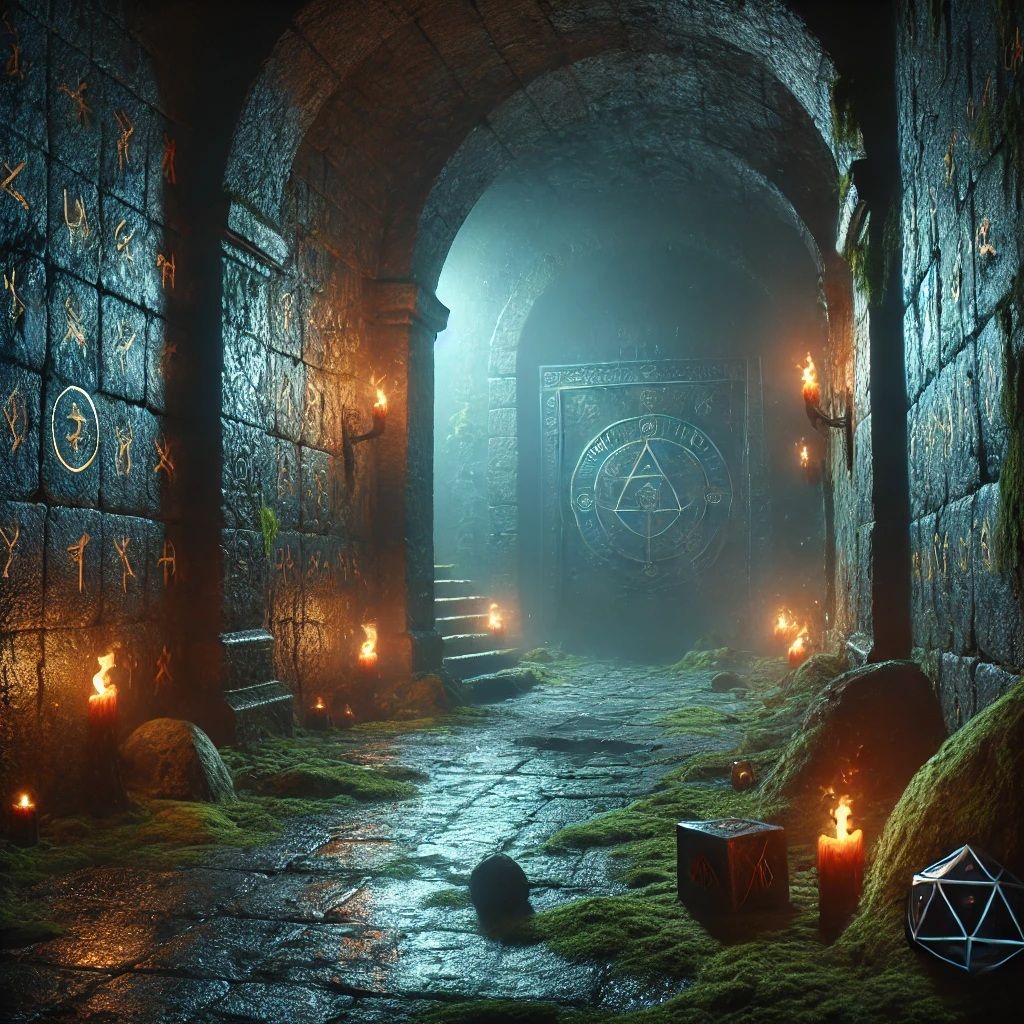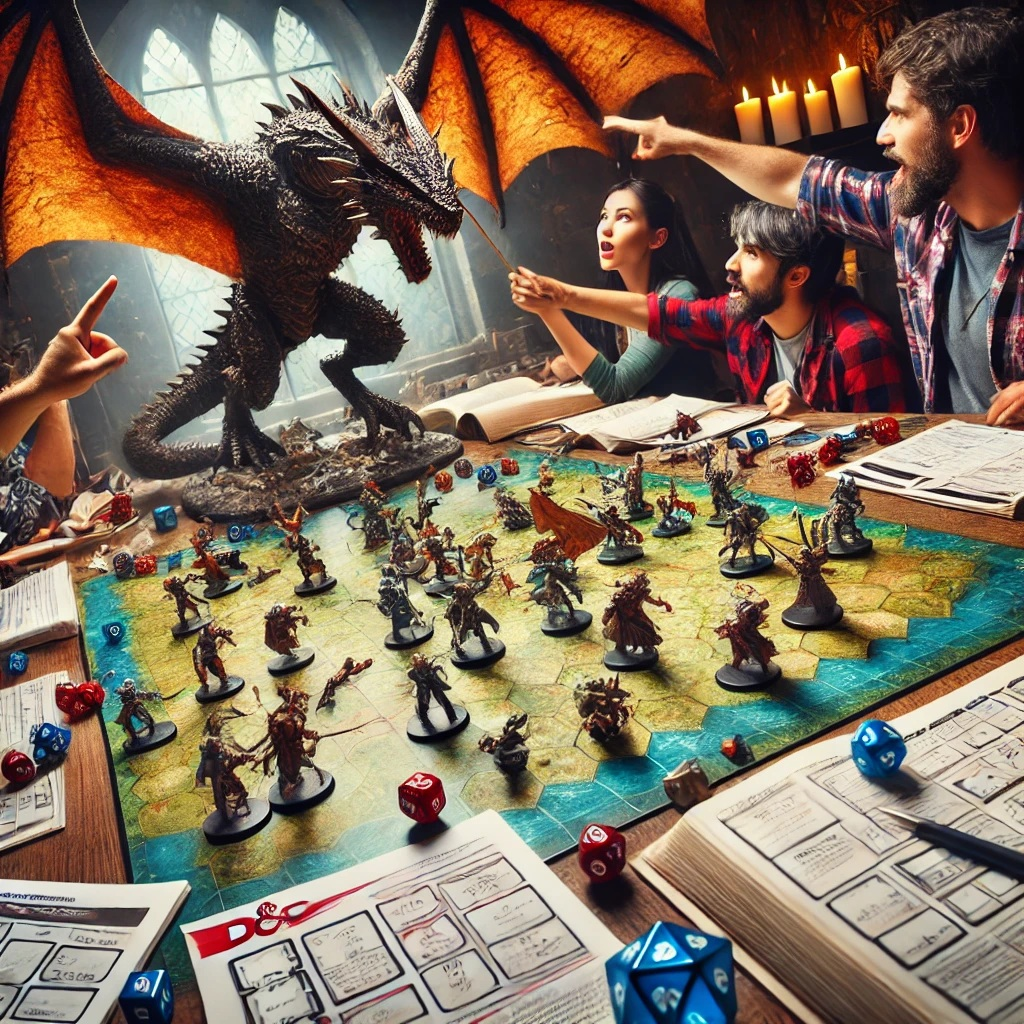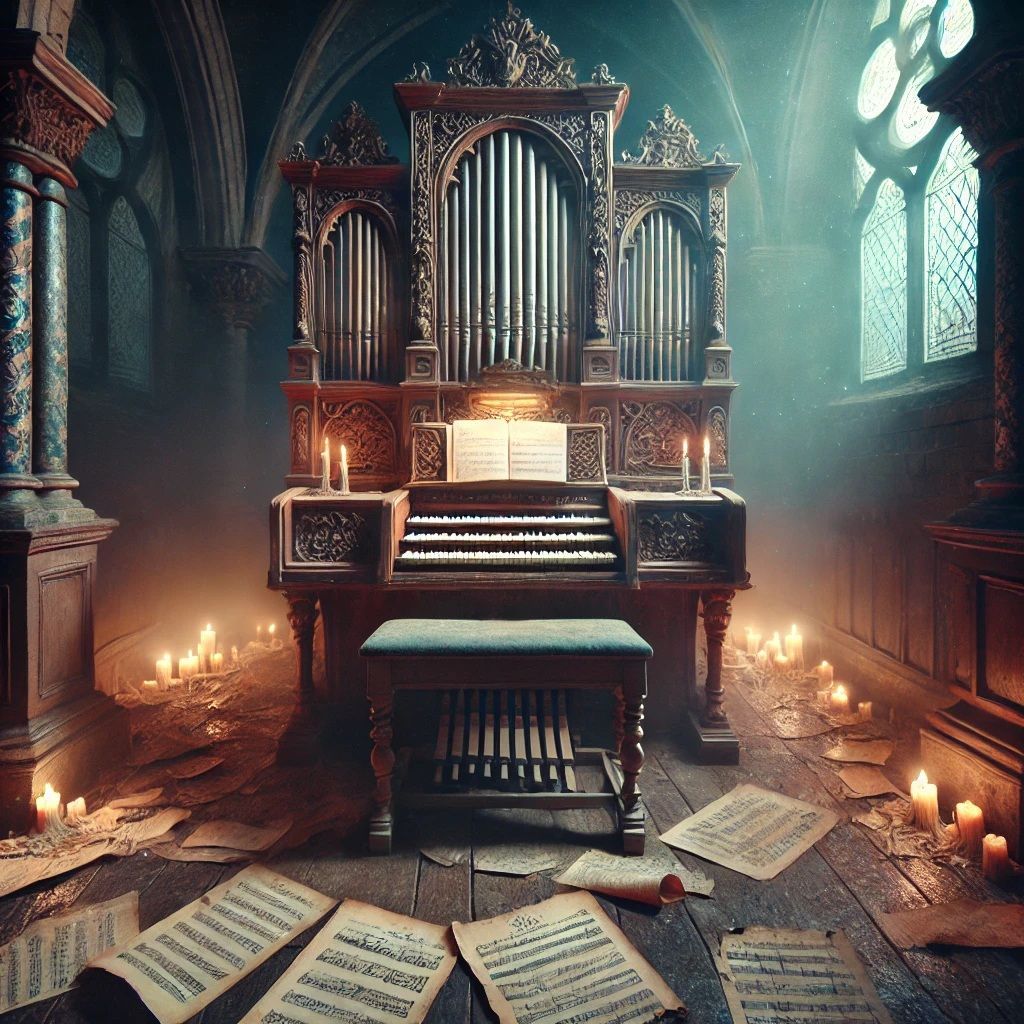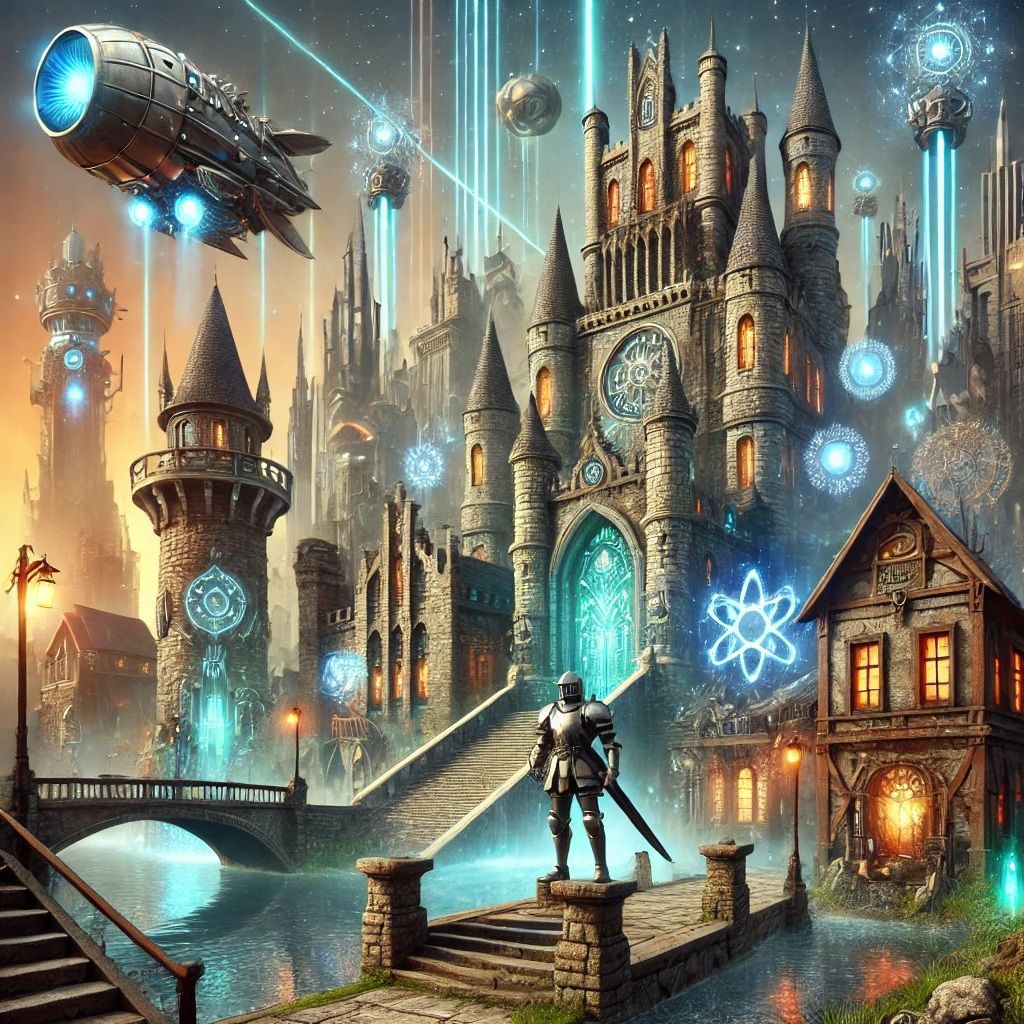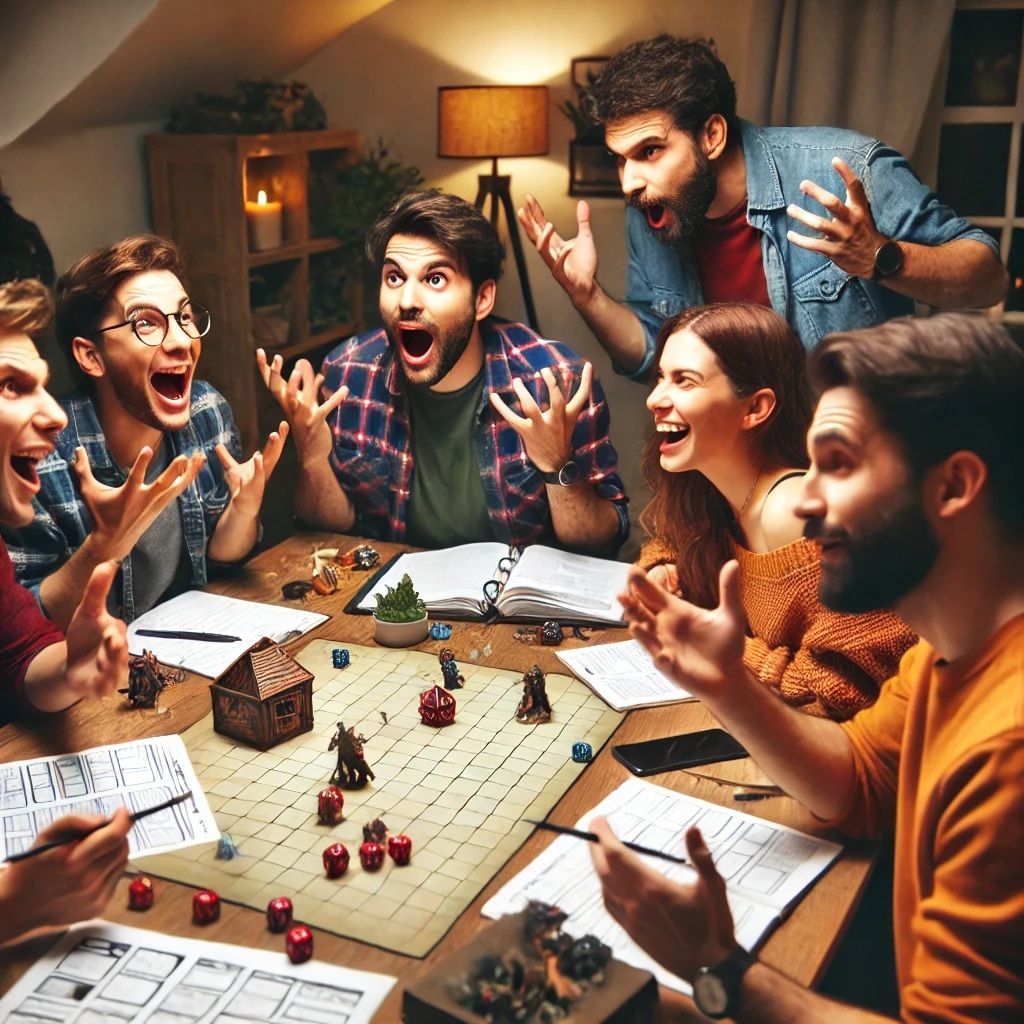City Building: Designing Lively and Detailed Urban Settings
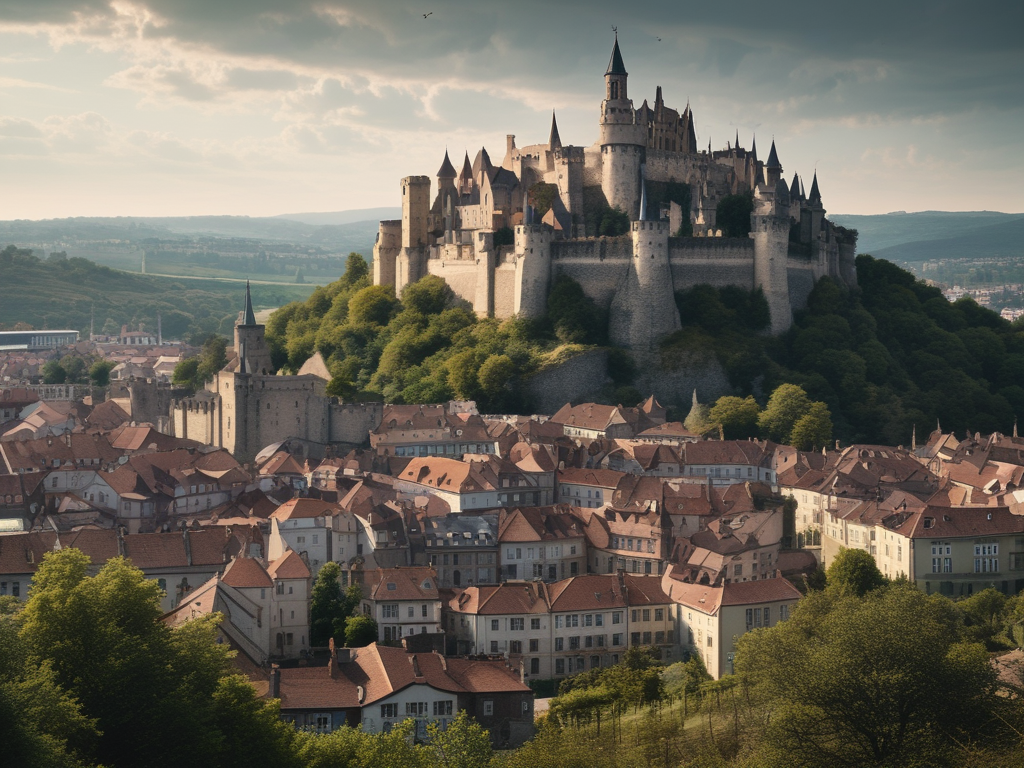
Dear Readers, welcome back to our Dungeons & Dragons (D&D) blog! Today, we’re diving into the intricate and exciting process of city building. Creating a lively and detailed urban setting for your campaign can provide a rich backdrop for adventures, enhance immersion, and offer countless opportunities for exploration, intrigue, and character development. A well-designed city is more than just a collection of buildings; it’s a living, breathing entity with its own history, culture, and dynamics. In this post, we’ll explore the key elements of city building, provide tips for designing vibrant urban environments, and offer practical examples to inspire your own creations. So, let’s embark on this journey to master the art of city building and bring your campaign’s urban settings to life.
The Importance of Urban Settings in D&D
Urban settings play a crucial role in D&D campaigns, offering unique opportunities and challenges that differ from wilderness or dungeon environments. Here are some reasons why urban settings are essential:
1. Central Hubs for Adventure
Cities serve as central hubs for adventure, where players can gather information, purchase supplies, recruit allies, and engage in various quests. They provide a base of operations and a launching point for further exploration.
Example: The bustling city of Waterdeep in the Forgotten Realms serves as a major hub for adventurers, offering countless opportunities for intrigue, commerce, and adventure.
2. Rich Social Interactions
Urban settings are teeming with diverse NPCs, each with their own stories, motivations, and secrets. These social interactions can lead to rich role-playing experiences and complex character dynamics.
Example: In the city of Baldur’s Gate, players can interact with merchants, nobles, criminals, and common folk, each offering unique quests and storylines.
3. Complex Political Dynamics
Cities often feature complex political dynamics, with various factions vying for power and influence. Navigating these politics can create engaging plotlines and moral dilemmas.
Example: The city of Ravnica is governed by powerful guilds, each with its own agenda. Players must navigate these guilds’ rivalries and alliances to achieve their goals.
4. Diverse Cultural Experiences
Urban settings reflect a diverse range of cultures, traditions, and histories. Exploring these cultural elements can add depth and authenticity to your campaign world.
Example: The multicultural city of Sigil, the City of Doors, is a melting pot of races and cultures from across the multiverse, providing endless opportunities for cultural exploration.
Key Elements of City Building
To create a lively and detailed urban setting, consider incorporating the following key elements:
1. Geography and Layout
The geography and layout of a city influence its character, development, and daily life. Consider the natural features, city plan, and districts when designing your urban setting.
Example: A city built along a river may have distinct waterfront districts with bustling docks, markets, and warehouses. In contrast, a city nestled in the mountains may feature terraced districts and narrow, winding streets.
Tips:
- Map the City: Create a map that outlines the city’s layout, including major roads, districts, landmarks, and natural features.
- Define Districts: Divide the city into distinct districts, each with its own character and purpose, such as residential areas, commercial hubs, and industrial zones.
- Consider Accessibility: Think about how people and goods move through the city. Include main thoroughfares, bridges, gates, and transportation options.
2. History and Lore
A city’s history and lore provide context and depth, shaping its identity and influencing its present-day dynamics. Consider significant events, founding myths, and notable figures in the city’s past.
Example: The city of Neverwinter has a rich history, including its founding by Lord Nasher Alagondar and its recovery after the eruption of Mount Hotenow.
Tips:
- Create a Timeline: Develop a timeline of key events in the city’s history, including its founding, major conflicts, and periods of growth or decline.
- Incorporate Myths and Legends: Include myths and legends that add to the city’s mystique, such as tales of ancient heroes, hidden treasures, or supernatural occurrences.
- Highlight Influential Figures: Identify notable figures who have shaped the city’s history, such as founders, rulers, heroes, and villains.
3. Government and Politics
The government and political structure of a city influence its laws, power dynamics, and societal interactions. Consider the type of government, key political figures, and influential factions.
Example: The city of Athkatla is governed by the Cowled Wizards, who hold significant political power and regulate the use of magic within the city.
Tips:
- Define the Government: Determine the type of government, such as a monarchy, republic, council, or theocracy. Identify the ruling body and its members.
- Identify Factions: Highlight influential factions within the city, such as noble houses, guilds, religious orders, and criminal organizations. Consider their goals, alliances, and rivalries.
- Create Laws and Regulations: Develop laws and regulations that reflect the government’s priorities and values. Consider how these laws affect daily life and adventuring activities.
4. Economy and Commerce
The economy and commerce of a city drive its prosperity and daily activities. Consider the city’s main industries, trade routes, markets, and economic challenges.
Example: The city of Waterdeep is a major trade hub with bustling markets, wealthy merchants, and a diverse range of goods from across the Sword Coast.
Tips:
- Identify Key Industries: Determine the main industries that support the city’s economy, such as agriculture, mining, trade, or crafts.
- Map Trade Routes: Identify key trade routes that connect the city to other regions. Consider how goods and resources flow into and out of the city.
- Design Markets and Shops: Create vibrant markets and shops that reflect the city’s economic activities. Include unique goods and services that adventurers might seek.
5. Culture and Society
The culture and society of a city shape its identity, traditions, and daily life. Consider the city’s cultural influences, social structure, festivals, and customs.
Example: The city of Calimport is influenced by its rich Calishite culture, featuring grand bazaars, intricate architecture, and vibrant festivals.
Tips:
- Highlight Cultural Influences: Identify the cultural influences that shape the city’s identity, such as dominant races, religions, and historical events.
- Develop Social Structure: Outline the city’s social structure, including different social classes, ethnic groups, and communities. Consider how these groups interact and coexist.
- Create Festivals and Customs: Develop festivals, holidays, and customs that reflect the city’s culture. Consider how these events impact daily life and provide opportunities for adventure.
6. Notable Landmarks
Notable landmarks add character and significance to a city. Consider famous buildings, natural features, and historical sites that define the city’s landscape.
Example: The Blackstaff Tower in Waterdeep is a renowned landmark, serving as the residence of the city’s Archmage and a center of magical study.
Tips:
- Identify Key Landmarks: Highlight key landmarks that are central to the city’s identity and history. Include descriptions and significance for each landmark.
- Incorporate Points of Interest: Include points of interest that adventurers might explore, such as ancient ruins, hidden shrines, or secret passages.
- Create Unique Features: Design unique features that set the city apart, such as a magical fountain, a colossal statue, or an enchanted forest.
Practical Examples of City Building
To illustrate how you can apply these elements, here are practical examples of city building for different types of urban settings:
Example 1: The Coastal Trade City of Seawatch
Geography and Layout:
- Location: Seawatch is located on a rocky peninsula, overlooking a natural harbor. The city is built on several levels, with terraced districts connected by winding staircases and bridges.
- Districts: The city is divided into distinct districts, including the Harbor District, the Market District, the Noble Quarter, and the Cliffside Slums.
History and Lore:
- Founding: Seawatch was founded centuries ago by seafaring traders seeking a safe harbor. It grew into a major trade hub due to its strategic location.
- Significant Events: The city has survived pirate raids, naval battles, and a devastating storm that nearly destroyed the harbor. Legends speak of a sunken treasure hidden beneath the waves.
Government and Politics:
- Government: Seawatch is governed by a Merchant Council, comprising influential traders and ship captains. The council is led by the Harbor Master, who oversees trade and defense.
- Factions: Key factions include the Merchant Guild, the Dockworkers’ Union, the Sea Priests, and the Pirate Lords. Each faction has its own goals and influence within the city.
- Laws and Regulations: Strict laws regulate trade and piracy, with harsh penalties for smuggling and theft. Magic is carefully monitored by the Sea Priests.
Economy and Commerce:
- Key Industries: Seawatch’s economy is driven by trade, fishing, shipbuilding, and pearl diving. The Market District is known for its bustling bazaars and exotic goods.
- Trade Routes: The city is connected to major trade routes, with ships arriving from distant lands. Caravans transport goods inland to other regions.
- Markets and Shops: Notable markets include the Silver Fish Market, the Golden Bazaar, and the Cliffside Market, where rare and magical items can be found.
Culture and Society:
- Cultural Influences: Seawatch’s culture is influenced by its seafaring heritage and diverse population. It is a melting pot of races and traditions, with strong ties to the sea.
- Social Structure: The city has a distinct social hierarchy, with wealthy merchants and nobles at the top, followed by skilled artisans, laborers, and the poor.
- Festivals and Customs: The annual Sea Festival celebrates the city’s maritime heritage with boat races, feasts, and rituals honoring the sea gods. The Pirate’s Ball is a notorious event attended by both citizens and outlaws.
Notable Landmarks:
- The Lighthouse of Seawatch: A towering lighthouse that guides ships safely into the harbor. It is also a symbol of the city’s resilience and spirit.
- The Merchant’s Plaza: A grand square in the Market District, surrounded by opulent merchant houses and bustling shops.
- The Sunken Temple: An ancient temple submerged beneath the harbor, rumored to hold a sunken treasure and guarded by sea creatures.
Example 2: The Mountain Fortress City of Ironhold
Geography and Layout:
- Location: Ironhold is a fortress city carved into the side of a mountain. It features sturdy stone architecture, with winding tunnels and fortified gates.
- Districts: The city is divided into the Upper Citadel, the Lower Warrens, the Forge District, and the Temple Quarter.
History and Lore:
- Founding: Ironhold was established by dwarven clans seeking refuge from a devastating war. It became a stronghold of craftsmanship and defense.
- Significant Events: The city has withstood numerous sieges and battles, earning a reputation for its unbreakable defenses. Legends tell of a hidden vault containing ancient dwarven relics.
Government and Politics:
- Government: Ironhold is governed by a Council of Clans, representing the major dwarven families. The High Thane leads the council and oversees the city’s defense and governance.
- Factions: Key factions include the Blacksmith’s Guild, the Stone Masons, the Order of the Hammer, and the Deep Delvers. Each faction plays a crucial role in the city’s functioning.
- Laws and Regulations: The city has strict laws regarding trade, craftsmanship, and defense. Honor and tradition are highly valued, with severe penalties for treachery and dishonor.
Economy and Commerce:
- Key Industries: Ironhold’s economy is driven by mining, blacksmithing, stone carving, and gem trading. The Forge District is renowned for its master craftsmen and high-quality goods.
- Trade Routes: The city is connected to underground trade routes and mountain passes, facilitating trade with other dwarven strongholds and surface settlements.
- Markets and Shops: Notable markets include the Iron Market, the Gemstone Bazaar, and the Forge Emporium, where exquisite weapons, armor, and jewelry are sold.
Culture and Society:
- Cultural Influences: Ironhold’s culture is deeply rooted in dwarven traditions and craftsmanship. It is a close-knit community with strong familial ties and a sense of pride in their heritage.
- Social Structure: The city has a hierarchical social structure, with the ruling clans and master craftsmen at the top, followed by skilled workers, miners, and laborers.
- Festivals and Customs: The annual Hammer Festival celebrates the city’s craftsmanship and history with forge competitions, feasts, and storytelling. The Clan Moot is a solemn event where clan leaders gather to discuss important matters.
Notable Landmarks:
- The Great Forge: A massive forge in the heart of the city, where master blacksmiths create legendary weapons and armor.
- The Hall of Ancestors: A grand hall adorned with statues and memorials honoring the city’s founders and heroes.
- The Deep Mines: Extensive mining tunnels beneath the city, rumored to contain rich veins of precious metals and ancient secrets.
Example 3: The Enchanted Forest City of Eldergrove
Geography and Layout:
- Location: Eldergrove is nestled within an ancient, enchanted forest. The city is built among the towering trees, with structures integrated into the natural landscape.
- Districts: The city is divided into the Tree Top Canopy, the Forest Floor, the Riverbank District, and the Sacred Grove.
History and Lore:
- Founding: Eldergrove was founded by elves seeking harmony with nature. It has remained a hidden sanctuary, protected by powerful magic and the ancient spirits of the forest.
- Significant Events: The city has faced threats from outside invaders and internal conflicts. Legends speak of a sacred tree that grants immense power to those deemed worthy.
Government and Politics:
- Government: Eldergrove is governed by a Council of Elders, representing the different elven clans and druid circles. The Archdruid leads the council and oversees the city’s harmony with nature.
- Factions: Key factions include the Moonblades, the Green Wardens, the River Guardians, and the Circle of the Oak. Each faction has a unique role in protecting and maintaining the city.
- Laws and Regulations: The city has laws focused on conservation, balance, and respect for nature. Magic is deeply intertwined with daily life, and misuse of magic is severely punished.
Economy and Commerce:
- Key Industries: Eldergrove’s economy is based on sustainable practices, including herbalism, alchemy, weaving, and magical crafting. The Forest Market is known for its rare and enchanted goods.
- Trade Routes: The city is connected to hidden forest paths and river routes, facilitating trade with other elven settlements and allies.
- Markets and Shops: Notable markets include the Moonlit Market, the Enchanted Bazaar, and the Herbalist’s Haven, where rare herbs, potions, and magical items are traded.
Culture and Society:
- Cultural Influences: Eldergrove’s culture is deeply connected to nature and elven traditions. It is a community that values balance, artistry, and spiritual connection with the forest.
- Social Structure: The city has a harmonious social structure, with the Council of Elders at the top, followed by skilled artisans, hunters, and gatherers. The community works together to maintain balance.
- Festivals and Customs: The annual Moon Festival celebrates the city’s connection to the moon and nature with rituals, dances, and offerings. The Solstice Gathering is a sacred event where the community renews their vows to protect the forest.
Notable Landmarks:
- The Heart Tree: A colossal, ancient tree at the center of the city, believed to be the source of Eldergrove’s magic and protection.
- The Crystal Falls: A magical waterfall that flows with crystal-clear water, said to have healing properties and guarded by water spirits.
- The Sacred Grove: A secluded area within the forest where the city’s most important rituals and ceremonies are held.
Enhancing Urban Adventures with Unique Elements
To further enrich your urban settings, consider incorporating unique elements that add depth and excitement to your adventures. Here are some ideas:
1. Hidden Secrets and Mysteries
Cities are often filled with hidden secrets and mysteries waiting to be uncovered. These can include hidden tunnels, secret societies, forgotten relics, and ancient curses.
Example: The city of Seawatch has a network of hidden smugglers’ tunnels beneath the streets, leading to forgotten catacombs and lost treasures.
2. Unique Urban Encounters
Urban settings provide opportunities for unique encounters that differ from typical wilderness or dungeon encounters. These can include street performers, pickpockets, political rallies, and magical anomalies.
Example: In Eldergrove, the players encounter a mischievous forest spirit causing trouble in the market, leading to a series of whimsical challenges and puzzles.
3. Dynamic Events and Festivals
Dynamic events and festivals can bring a city to life and provide engaging opportunities for role-playing and adventure. These events can include parades, competitions, ceremonies, and crises.
Example: During the Hammer Festival in Ironhold, the players participate in a blacksmithing competition and uncover a plot to sabotage the event.
4. Diverse NPCs with Depth
Populate your cities with diverse NPCs, each with their own personalities, backgrounds, and motivations. These NPCs can provide quests, information, and unique interactions.
Example: In Seawatch, the players meet Captain Elara Thorne, a former pirate turned merchant, who offers them a lucrative but risky job involving a sunken treasure.
5. Interactive Environments
Create interactive environments that players can explore and manipulate. This can include magical fountains, enchanted gardens, intricate clockwork mechanisms, and ancient ruins.
Example: In Eldergrove, the players discover an enchanted grove where they must solve a series of nature-based puzzles to unlock the secrets of the Heart Tree.
Conclusion
Designing lively and detailed urban settings is a rewarding endeavor that can significantly enhance your D&D campaign. By incorporating key elements such as geography, history, politics, economy, culture, and landmarks, you can create vibrant cities that serve as dynamic backdrops for adventure and intrigue.
Remember to consider the unique aspects of your urban settings, from hidden secrets and unique encounters to dynamic events and diverse NPCs. By paying attention to detail and infusing your cities with life and character, you can create immersive and engaging experiences that captivate your players.
Until next time, Dear Readers…















